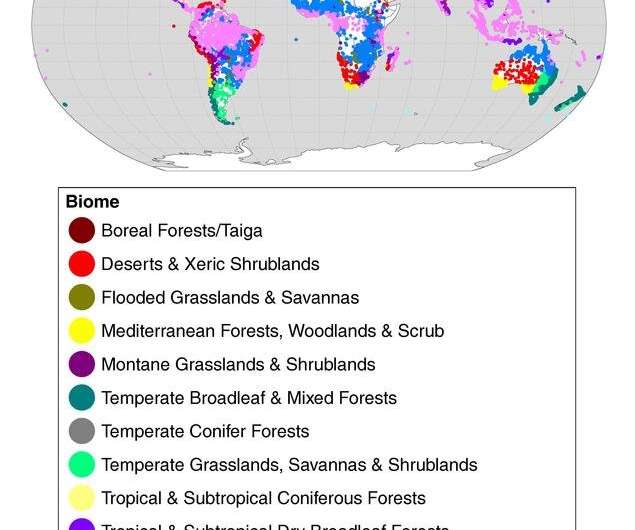Climate change in protected areas endangers biodiversity

Researchers at the University of Bayreuth have calculated for the first time how climate change is likely to affect the earth's conservation areas by 2070. In Nature Communications, they present their study with which they seek to give new impetus to environmental policy and the management of protected areas.
A total of 245,844 protected areas are currently registered worldwide. For 137,432 terrestrial nature reserves, the Bayreuth researchers developed detailed climate forecasts on the basis of reliable measurement data. The protected areas in which particularly significant climate changes are to be expected are located in the earth's temperate zones, or in polar zones in the northern hemisphere. They are relatively small, not very high above sea-level and offer little varied environmental conditions on their surface. They are threatened by human intervention and have, with regard to their flora and fauna, relatively much in common with other protected areas. In order to achieve forecasts that would be as accurate as possible, the authors of the new study worked with ten different climate models. At the same time, a distinction was made in all calculations between local, regional, and global climate changes.
The forecasts contain important information on the extent to which protected areas will be able to contribute to the preservation of biodiversity in the future. They may no longer be able to perform this task to the same extent as before if the living conditions of animals and plants change as a result of climate change. In many cases, it is to be expected that species in need of protection will actually leave the protected areas and move to neighboring regions. Here, however, they will be much more at risk, especially due to human influence. On one important point, however, the study gives the all-clear: Those protected areas of the world in which local climate changes have a particularly strong impact on existing ecosystems are not so important for the global survival of species on the "Red List of Endangered Species."
"With our calculations, we want to provide an impetus for systematically incorporating the consequences of climate change into the management of protected areas in the future. If climatic conditions change, this does not necessarily mean that existing protected areas have to be abandoned and other regions newly designated as protected areas. But at least in Europe, more intensive thought should be given than in the past to what the existing protected areas can and should do to preserve biodiversity into the future. Our new calculations will provide scientific evidence for this process. They are thus a basis for proactive biodiversity management. The new study also shows that Big Data technologies are now indispensable in environmental research," says lead author of the study, Samuel Hoffmann M.Sc., a graduate of the Bayreuth elite study course Global Change Ecology and doctoral student at the University of Bayreuth.
The authors of the study argue in favor of viewing the earth's protected areas more in their mutual context than has previously been the case. The possibility of combining some of them into larger units should also be considered. "In principle, it is advantageous for the preservation of biodiversity if protected areas are very wide-ranging and at the same time comprise areas with very different living conditions. Then species can react to climatic changes by changing their habitats without having to leave protected zones," says Prof. Dr. Carl Beierkuhnlein, who coordinated the study.
More information: Samuel Hoffmann et al. Predicted climate shifts within terrestrial protected areas worldwide, Nature Communications (2019). DOI: 10.1038/s41467-019-12603-w
Journal information: Nature Communications
Provided by Bayreuth University
















